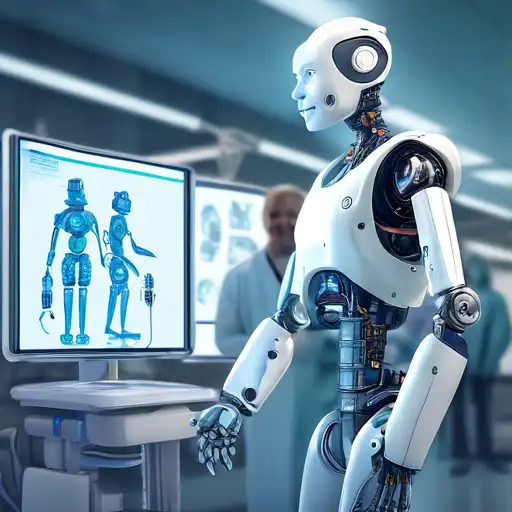The Dawn of a New Era in Healthcare
In recent years, the integration of robotics into healthcare has marked the beginning of a revolutionary era. This transformation is not just enhancing the efficiency of medical procedures but is also significantly improving patient outcomes. Robotics in healthcare is indeed a game changer, offering unprecedented precision, reducing human error, and enabling the execution of complex surgeries with minimal invasiveness.
Applications of Robotics in Healthcare
The applications of robotics in healthcare are vast and varied. From surgical robots that assist in performing delicate procedures to robotic prosthetics that restore mobility, the impact is profound. Below are some key areas where robotics is making a difference:
- Surgical Assistance: Robots like the Da Vinci Surgical System allow surgeons to perform complex procedures with enhanced precision and control.
- Rehabilitation: Robotic exoskeletons and prosthetics are transforming the lives of patients with mobility issues, offering them a new lease on life.
- Patient Care: Robots are being used for tasks such as dispensing medication, monitoring patient vitals, and even providing companionship to the elderly.
- Diagnostics: Automated robotic systems are speeding up the process of diagnosing diseases, making healthcare more efficient.
The Benefits of Robotics in Healthcare
The adoption of robotics in healthcare brings numerous benefits, including:
- Increased precision and accuracy in surgical procedures
- Reduced recovery times and hospital stays for patients
- Lower risk of infection due to minimally invasive techniques
- Enhanced ability to perform complex surgeries that were previously deemed too risky
Moreover, robotics is addressing the challenge of healthcare worker shortages by taking over repetitive and time-consuming tasks, allowing medical professionals to focus on more critical aspects of patient care.
Challenges and Future Directions
Despite its many advantages, the integration of robotics into healthcare is not without challenges. High costs, the need for specialized training, and concerns about job displacement are some of the hurdles that need to be addressed. However, as technology advances and becomes more accessible, these challenges are likely to be overcome.
The future of robotics in healthcare is bright, with ongoing research and development paving the way for even more innovative applications. From nanorobots that can target and destroy cancer cells to AI-powered robotic nurses, the possibilities are endless.
Conclusion
Robotics in healthcare is transforming the way medical care is delivered, offering solutions that were once considered the realm of science fiction. As we continue to explore and expand the capabilities of robotics, the potential to improve patient care and outcomes is limitless. The journey of robotics in healthcare is just beginning, and its impact will undoubtedly be a game changer for generations to come.
